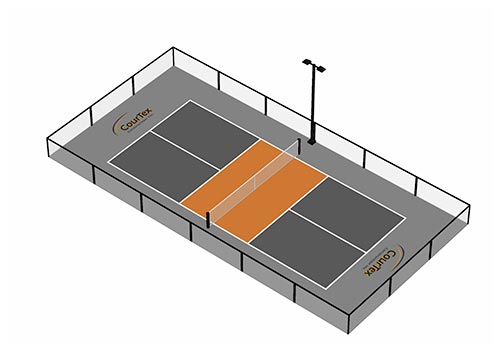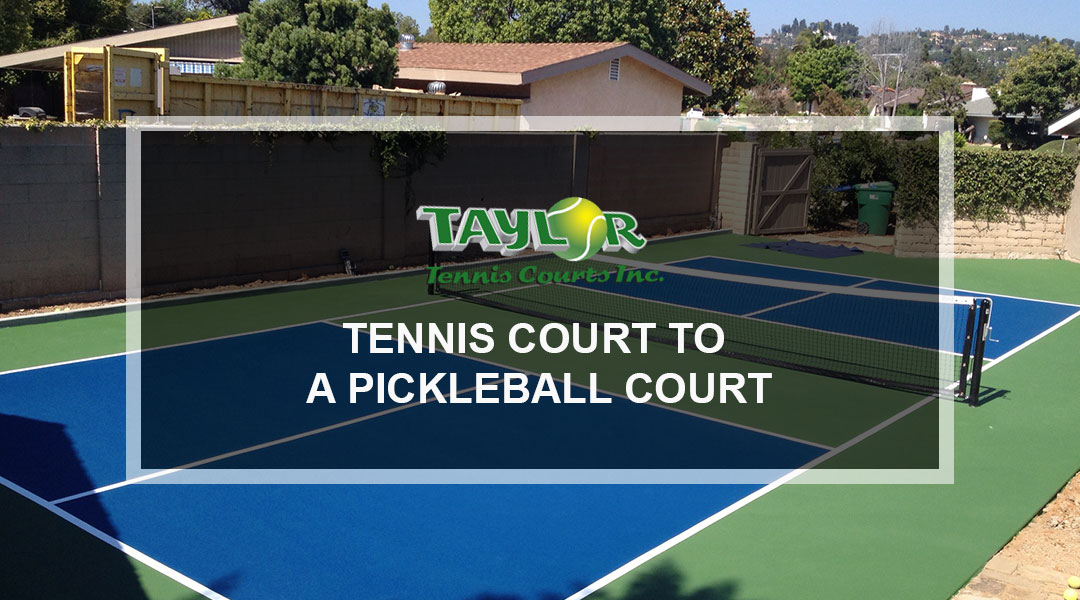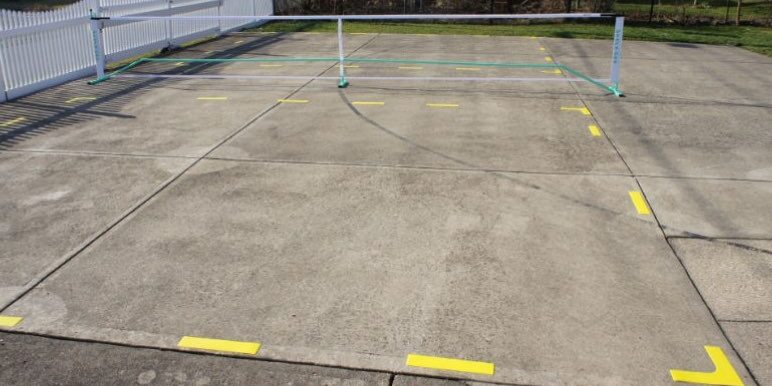Professional Pickleball Court Construction-- From Style to Installation
Professional Pickleball Court Construction-- From Style to Installation
Blog Article
Sustainable Practices in Pickleball Court Building And Construction You Must Know
As the popularity of pickleball proceeds to increase, so as well does the demand for sustainable methods in court building and construction. The effect of these methods extends much beyond the court itself.
Choosing Eco-Friendly Products
Selecting green products is a crucial action in the building and construction of sustainable pickleball courts. The choice of lasting products not just decreases environmental effect however likewise improves the long life and efficiency of the court. Secret products include recycled rubber for the surface area, which provides outstanding resilience and shock absorption while diverting waste from land fills.
Furthermore, utilizing locally sourced products reduces transport discharges and supports local economic climates. Pickleball court construction. Using indigenous hardwoods for fencing and seats can supply a lasting visual while ensuring resilience against the aspects.
Including permeable materials for court foundations can further add to sustainability by enabling natural water drain and minimizing drainage. These selections not just shield local ecological communities yet likewise advertise healthier play atmospheres.
Efficient Drain Solutions
While the selection of environmentally friendly materials is important, executing efficient drain services is equally crucial for maintaining lasting pickleball courts. Proper water drainage not just protects the court surface from water damage but also minimizes disintegration and overflow, advertising ecological honesty.
Effective drainage systems can include absorptive paving, which permits water to infiltrate the ground instead of merging externally. This decreases the possibility of standing water, which can lead to mold and mildew and other maintenance issues. Furthermore, integrating purposefully positioned water drainage channels and swales can direct excess water away from the court location, making certain a dry playing surface and protecting against soil erosion.
Utilizing native plants in the landscaping around the courts can even more improve drain by taking in excess water and reducing drainage. These plants need much less irrigation and advertise biodiversity, aligning with lasting methods.
In addition, it is critical to on a regular basis maintain the drain system to ensure its lasting effectiveness. This consists of clearing debris and surveillance for obstructions. By focusing on efficient drain solutions, pickleball court erectors can substantially contribute to the sustainability and longevity of the facility, eventually profiting both players and the atmosphere.
Energy-Efficient Lights Options
As the demand for pickleball remains to expand, incorporating energy-efficient lighting options into court style has actually come to be significantly important for sustainability. Standard lights systems usually eat excessive power, adding to greater functional expenses and environmental effect. As a result, taking on contemporary, energy-efficient innovations is crucial for both new constructions and remodellings.
LED (Light Emitting Diode) illumination sticks out as a leading option because of its long life and power financial savings (Pickleball court construction). Contrasted to standard illumination, LEDs utilize roughly 75% much less energy and can last up to 25 times longer, considerably reducing upkeep expenses. The directional nature of LED illumination decreases light pollution, ensuring that lighting is focused on the court instead than bordering locations.

Sustainable Surface Area Alternatives
Exploring lasting surface area alternatives for pickleball courts has obtained traction among building contractors and players alike. The focus on environmentally friendly products not just straightens with the growing environmental understanding yet additionally enhances the performance and toughness of the courts.
One popular option is using recycled rubber, which can be sourced from made use of tires. This material gives superb shock absorption, decreasing the danger of injuries for gamers while promoting sustainability. In addition, modular tiles made from recycled plastics supply another viable choice. These floor tiles are easy to set up and change, and their flexibility permits for various court setups.
Natural grass courts are likewise becoming a sustainable selection, promoting biodiversity and minimizing the heat island impact. Nonetheless, they need routine upkeep and water, which may not line up with all sustainability objectives.

Water Conservation Strategies

One more efficient technique entails the installment of rain harvesting systems. These systems gather and keep rainwater for usage in preserving court surfaces and landscape design. This strategy not just saves drinkable water but additionally decreases dependence on metropolitan resources.
In addition, utilizing drought-resistant landscaping around the courts is vital. Indigenous plants need much less water and are much better adapted to neighborhood climate conditions, therefore decreasing general water consumption. In addition, utilizing effective watering systems, such as drip watering, makes sure that water is supplied directly to plant roots, lessening dissipation and waste.
Conclusion
Integrating lasting techniques in pickleball court building significantly contributes to environmental preservation and resource effectiveness. Using environmentally friendly materials, carrying out efficient drain options, and embracing energy-efficient illumination options can significantly decrease eco-friendly influence. In addition, discovering lasting surface area options and using water conservation strategies boost the overall sustainability of these recreational centers - Pickleball court construction. By focusing on these practices, the building of pickleball courts can align with more comprehensive ecological objectives while advertising durability and capability within areas.
As the appeal of pickleball continues to rise, so as well does the demand for lasting practices in court building.Selecting eco-friendly products is an essential step in the construction of lasting pickleball courts. By focusing on energy-efficient lighting options, pickleball court fabricators can add to an extra lasting future while satisfying the needs of stakeholders and players alike.Integrating sustainable surface area alternatives not only improves the efficiency of pickleball courts but additionally paves the method for executing reliable water conservation methods.Including sustainable practices in see this site pickleball court building significantly adds to environmental preservation and source effectiveness.
Report this page